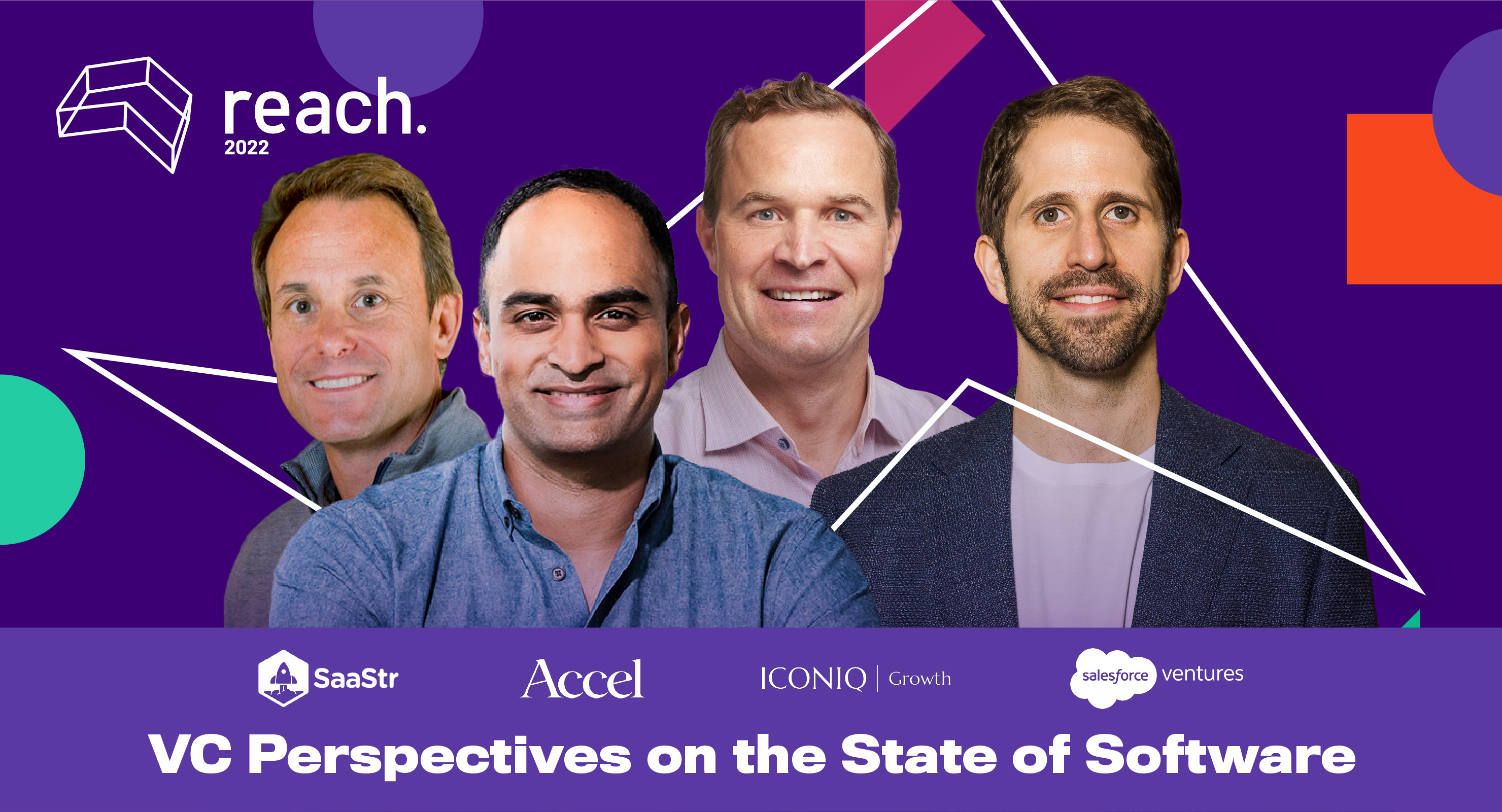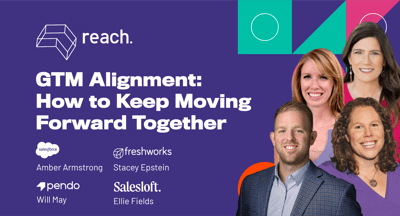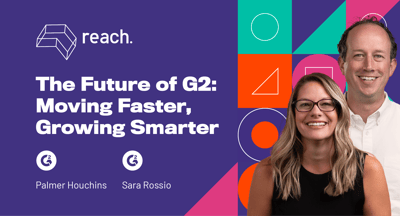December 8, 2022
 by Godard Abel / December 8, 2022
by Godard Abel / December 8, 2022

A challenging macro environment. Capital efficiency. Growth rate retention. Valuation.
These words are creating storm clouds in the business-to-business (B2B) software-as-a-service (SaaS) sky.
Companies that crushed their net new annual recurring revenue (ARR) goals in 2021 likely can’t say the same about 2022. Most tech startups are now missing those ARR growth targets. Many are realizing that it’s hard to be a unicorn (or even decacorn) and maintain and grow valuation to deliver venture returns to their latest investors.
On the positive side, some public SaaS cloud leaders such as Atlassian, DataDog, ZoomInfo are continuing to grow at epic rates well beyond $1 billion in ARR showing that customer demand for great SaaS solutions continues to grow rapidly even in a tougher economy.
So, what’s happening in the B2B software market and growth stage venture capital? Was it just a cloud boom in 2021? What does it take to grow a healthy company and sustain the environment today?
Jason Lemkin, Trusted Advisor, Investor and Founder at Champion of SaaStr, hosted a panel during Reach 2022, G2’s annual digital conference, to address these concerns. The panel was a powerhouse of venture capital (VC) investors: Arun Mathew, Partner at Accel; Doug Pepper, General Partner at ICONIQ Growth; and Alex Kayyal, SVP and Managing Partner at Salesforce Ventures.
We’re excited to share a summary of the key learnings from our stellar G2 Reach panel, which you can now watch on demand.
Growth stage investments have taken a massive tumble over the last year, but early-stage venture deals are still happening.
SaaS companies have grown massively in number over the past decade, with over 100,000 SaaS products listed on G2. A record number of SaaS companies went public in recent years, with 47 IPOs in 2021 alone, according to ICONIQ. Many other SaaS leaders raised at least one extra round in the last 18 months, with $94 billion raised by U.S. SaaS vendors in 2021 alone. This meaning very few growth deals will be made in this down market.
This drop in deals shouldn’t worry companies just getting off the ground as much. How they perform in the next three to four quarters will matter. All panelists echoed that continued growth is only possible with customer value delivery.
Businesses unsure about growing in this market should take inspiration from Salesforce, whose growth slowed to just north of 20% during the economic recession between 2007 and 2009, but then reaccelerated when growth returned to the broader economy. Mission-driven companies with a huge total addressable market (TAM) and healthy balance sheets will become even stronger from the current economic turbulence.
What’s happening behind the scenes is a significant deterioration in attainment versus plan. Most companies built aggressive plans based on 2020 and 2021 growth rates and now aren't meeting those heady growth expectations. They’re probably still expanding, but not doubling or tripling as many were in prior years.
“The median growth rate was about 83% last year across a very wide range of companies that we track. That's degrading all the way to 48% this year.”
Doug Pepper
General Partner at ICONIQ Growth
Plan and attainment are no longer aligned, leaving companies in a messy middle ground where they’re forced to readjust to slower growth rates. Alex Kayyal shared that the current growth market slow-down is a valuation reset.
Plus, higher valuation expectations make investing difficult for Series B and beyond. That said, mission-critical companies that need budget support are drawing focus.
Earnings growth drives value creation in the long run. But what's the way out for businesses falling short of top-line growth rates?
Today's tougher market means buyers take longer to make decisions, resulting in extended sales cycles. Businesses are up against a market that’s no longer a free money economy where almost anything could sell. Even though they haven’t disappeared, budgets are also under tight scrutiny. Some companies may be ready, but this is where the rubber meets the road.
Entrepreneurs must use available funds to build important products that solve key customer problems and have off-the-charts product-market fit. They must differentiate nice-to-have from must-have products that deliver real return on investment (ROI).
Additionally, investing in tackling inefficiencies often hidden by sales and marketing growth engines will help double down on margin and profitability instead of just growth. Getting these fundamentals right will get them closer to the ARR plan.
To be clear, incredible companies doing extremely well are out there even in this market. As these firms keep trading at a certain value, other founders have raised expectations about the value of their business.
The current economic situation will realign their predictions and separate the needs from the wants. In the end, building a successful business will boil down to listening to your customers, leveraging buyer intent data, and acting accordingly.
“It's going to be a stark reality for many companies about what your company is worth if the best companies are trading at the current levels today.”
Arun Mathew
Partner at Accel
Out-of-whack expectations from founders make investing difficult in today’s market. Arun explains, “There's just a delta between what those companies were valued over the last two or three years versus what that company is worth today. And that's not to mention what the prospects look like in a harder macroeconomic environment where it is tougher to grow.”
Companies that have raised funds earlier won’t have huge balance sheets over the next year or two. They’ll eventually seek funding to extend the runway and see if they can raise rounds versus flat rounds. While the past has seen a rush to uplift headline valuation, founders have to strike a balance between fair valuation and long-term success.
There was such a flood of capital over the last two or three years that even the most capital-efficient companies, bootstrapped or not, ended up taking some capital. For example, 1Password, a password manager software company, which had been bootstrapped for 15 years, raised $600+ million over the last couple of years.
As the market changes, it will be easier for companies with capital efficiency in their DNA to switch back to a bootstrapping mindset and measure ROI on each dollar.
Earlier, companies would ask investors about a high-value thing they can do. The shift in the environment has made entrepreneurs take investors' input on what ROI investment they should be making. The current capital constraint is helping founders focus on what truly matters.
“When things are going well, it’s sort of easy to celebrate culture and values. When your moments are difficult, culture and values rise to the top.”
Alex Kayyal
SVP and Managing Partner at Salesforce Ventures
As Alex explains, founders should focus on finding one or two things they can do to survive and thrive in this environment. What matters most is how they consider difficult decisions, communicate with stakeholders, and build a sustainable business despite uncertainty.
While growth is rare right now, investors are putting money into companies that want to attack big markets. To be one of these, you have to:
Businesses weighing their options should understand that no harm comes from doing a down round if you need it to execute plans. But consider getting the cost structure in line and establishing a well-functioning organization before you decide on the amount to raise or the percentage to dilute.
Now’s an exciting time to be an entrepreneur and an investor. It’s only a matter of time before the previous valuations in the public markets reset and align with growth rates. It will decelerate till then, but use this time to become capital-efficient, eliminate inefficiencies, and build must-have products.
If you’ve created a solid product that uniquely solves customer problems, good times will come back! But you have to adapt to successfully lead your business through a downturn and emerge stronger, as I shared in this article.
Godard Abel is the co-founder and CEO of G2. He previously built cloud CPQ pioneers BigMachines (acquired by Oracle) and SteelBrick (acquired by Salesforce).
In a recent G2 Reach 2023 panel discussion about go-to-market (GTM) strategies, B2B SaaS...
 by Palmer Houchins
by Palmer Houchins
I recently had the pleasure of attending one of the standout sessions at this year’s G2 Reach...
 by Palmer Houchins
by Palmer Houchins
At G2 Reach 2023, my colleague Palmer Houchins, Head of Marketing at G2, and I teamed up to...
 by Sara Rossio
by Sara Rossio
In a recent G2 Reach 2023 panel discussion about go-to-market (GTM) strategies, B2B SaaS...
 by Palmer Houchins
by Palmer Houchins
I recently had the pleasure of attending one of the standout sessions at this year’s G2 Reach...
 by Palmer Houchins
by Palmer Houchins


